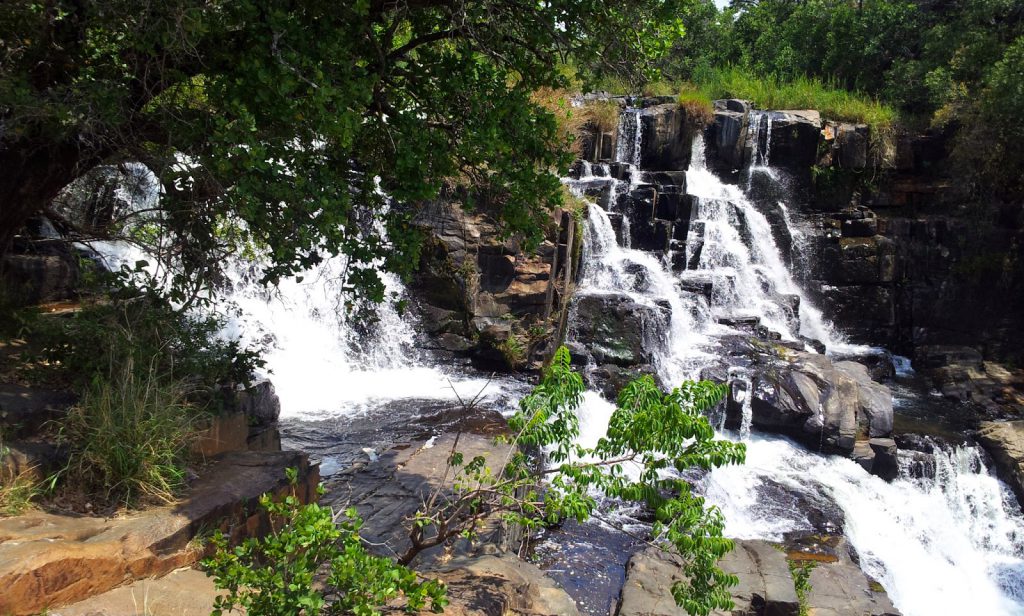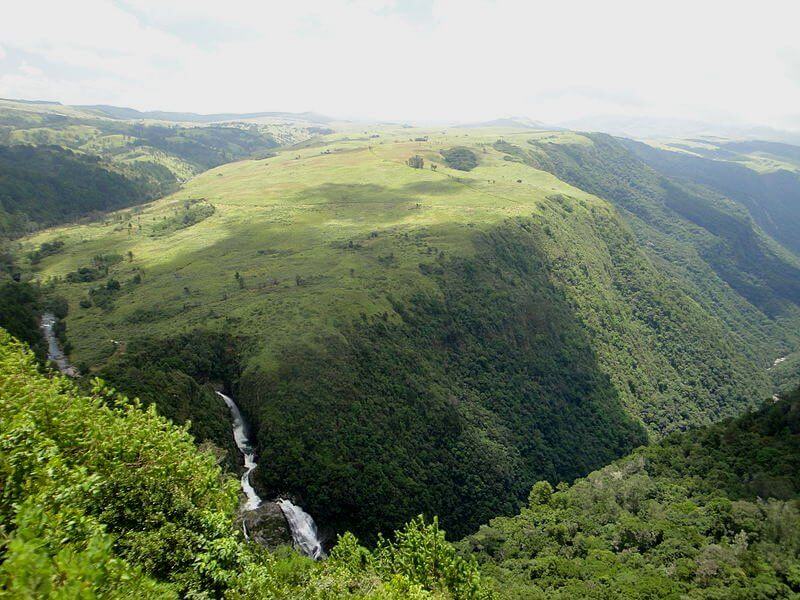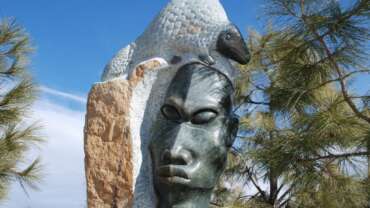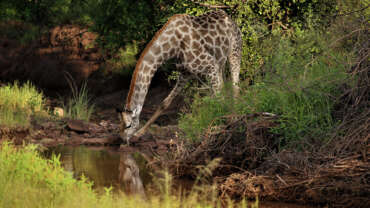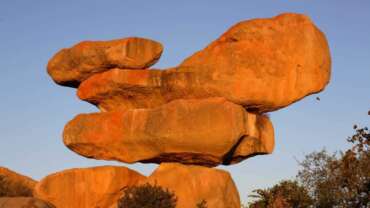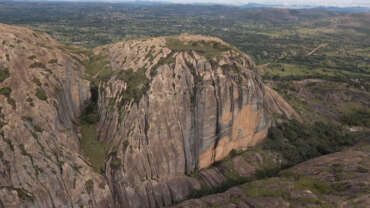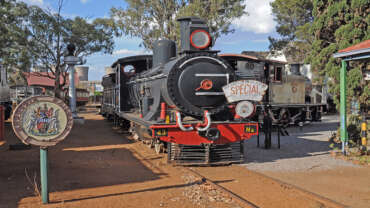Beautiful Waterfalls of Zimbabwe
The Pungwe Falls
The Pungwe Falls flows across the Mozambique border and eventually into the Indian Ocean. The source of the water is the Pungwe River which flows throughout the year. It is advised to visit the falls accompanied by a tour guide.The Pungwe Falls are one of the scenic highlights of Zimbabwe.The landscape leading toward the horizon is uncluttered by human habitation or roads, the air is cool and fresh.
How to get here from the Rhodes Nyanga Hotel: 0.67 KM turn left onto the scenic road, 1.04 KM continue straight on ignoring the road to the right, 2.10 KM continue straight on the scenic road ignoring the road to the left,6.73 KM continue straight on the scenic road ignoring the road to the right, 11.0 KM turn left onto the road marked Pungwe Falls and Mtarazi Falls, 20.2 KM turn off left for Pungwe Drift road, 20.9 KM arrive at Zimbabwe Parks and Wildlife Authority office, 21.4 KM arrive at Pungwe Drift
For the return journey: From Pungwe Falls road turnoff turn right onto the scenic road reversing direction, 9.2 KM turn left (i.e. not returning by the same scenic road) 15.9 KM turn right on the A14 for Nyanga National Park, or left for Juliasdale.The scenic road has become severely degraded and a high clearance vehicle is recommended as a minimum requirement; 4WD is recommended.
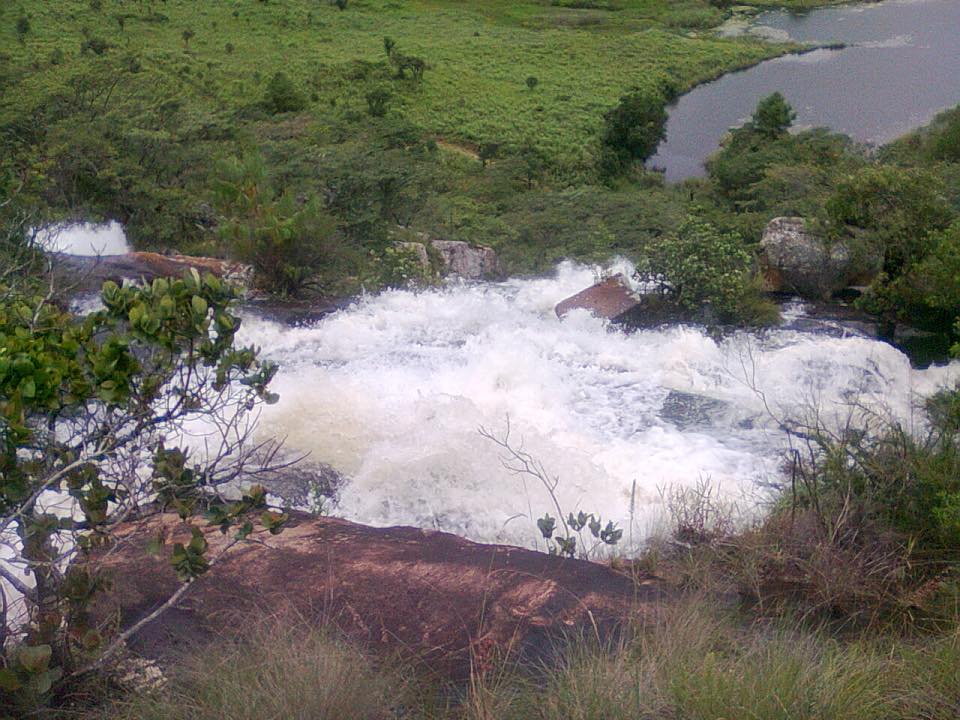
Nyamazi Falls
With the pictures of the beautiful Nyanga Mountains as its backdrop, the Nyamazi Falls (Juliasdale, Nyanga) overlooks magnificent 100m waterfalls. Visit and see this beauty for yourself.
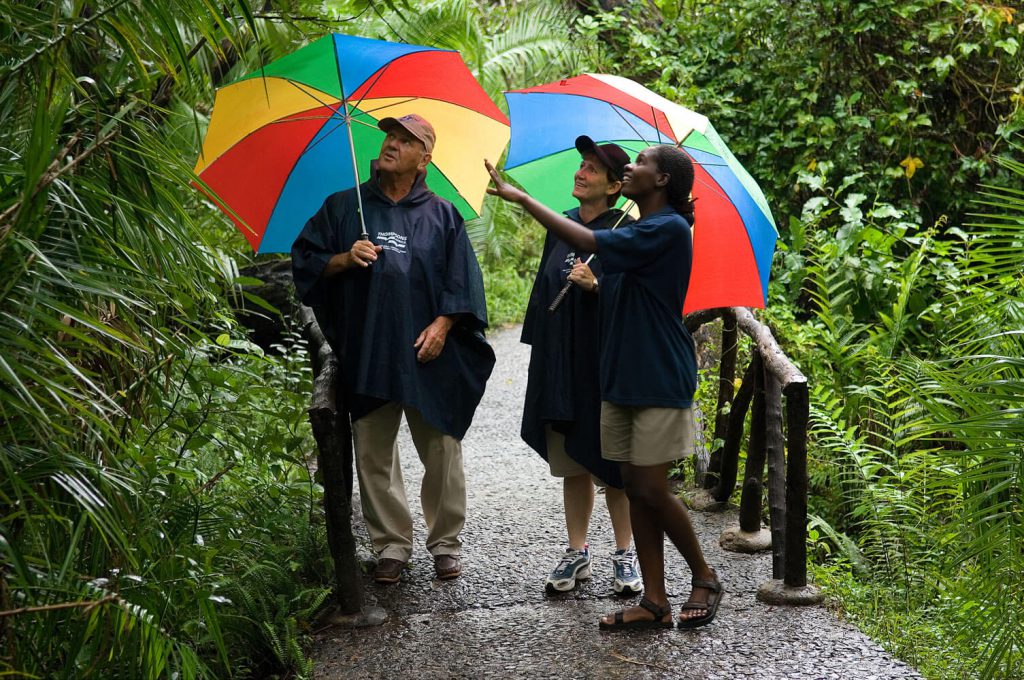
The Victoria Falls Rainforest
The Victoria Falls Rainforest, as it has become known, is an area of dense woodland vegetation supported and nourished by the constant spray from the waterfall. The main section of the Rainforest extends only over a small section of the Victoria Falls Park, at its western end, on Cataract and Livingstone Islands on the lip of the Falls, and opposite the Main Falls, on the Zimbabwe side, where the never ending rain from the shadow of the Falls supports the development of a rich and diverse plant community. This diverse flora in turn supports a varied diversity of insects, amphibians, birds and mammals.
Further along the lip of the Falls, opposite the eastern half of the Falls and towards Danger Point, the water seasonally dries up and there is only heavy rainfall from the spray during high water periods. In these sections the developed forest flora of the Rainforest are absent and grass, bush and scrub dominate.
In the main gorge of the Falls, as the tumbling waters of the Zambezi River fall into the void, the spray they produce is buffeted upwards by currents of air that rise up from the bottom. As the spray rises the small droplets condense and fall, creating the localised areas where it appears to constantly rain. Rivulets and small streams run over the saturated soil and back down the almost vertical cliffs of the chasm, only to be caught by the gusts of wind as they fall and blown back up into the air.
These gusts of wind are enough to prevent many trees and shrubs from growing on the edge of gorge – there are no trees or shrubs hanging over into the gorge itself, and the main rainforest flora develops a few metres back from the edge, leaving a grassy fringe area where only grass and herbaceous species grow.
The clouds of spray which are forced up from the gorge and rise into the sky are a permanent feature of the Victoria Falls. Best seen in the early morning cool air, the column of spray is often viewable from many miles away, although its height and visibility vary greatly due to local conditions, and of course the volume of the Zambezi’s flow.
Under its shadow the near constant rainfall supports an area of dense vegetation which remains green throughout the dry season, the Victoria Falls Rainforest. The rising spray best seen in the early morning can be seen from many miles away
Formation of the Rainforest
Whilst the rainforest does support a varied and diverse flora, it is not, in ecological terms, a proper rainforest, but instead an extension of the natural river-bank, or riverine fringe, flora of the Zambezi in this region, and dependent on the spray from the waterfall for its formation. Many of the tree and shrub species found in the rainforest are for example also found along the river banks and islands upstream of the Falls. Downstream of the Falls the precipitous nature of the gorges prevent the formation of this riverine fringe.
This riverine fringe community is found along most rivers in south central Africa and wider tropical zones where conditions allow, suggesting that these plant communities are remnants of a once much more extensive higher rainfall vegetational community which covered the region during wetter periods in the not so distant geological past.
The lush rainforest can be seen behind my sons in the photograph
The rainforest has also evolved and migrated over time, and has progressed upstream with the waterfall as it has carved its way through the solid basaltic rock to create the twisting Batoka Gorge. The spray from the Falls must vary in magnitude during the different stages of the erosive process, and the current area of rainforest is thought to be small compared previous extents. As the river continues to erode down into its bed and begins to cut a new fall-line, the current area of rainforest will dry out and die as the conditions favourable to its formation move with the Falls, and new rainforest areas will develop. Already the areas around the Devil’s Cataract are developing characteristics of this rich flora.
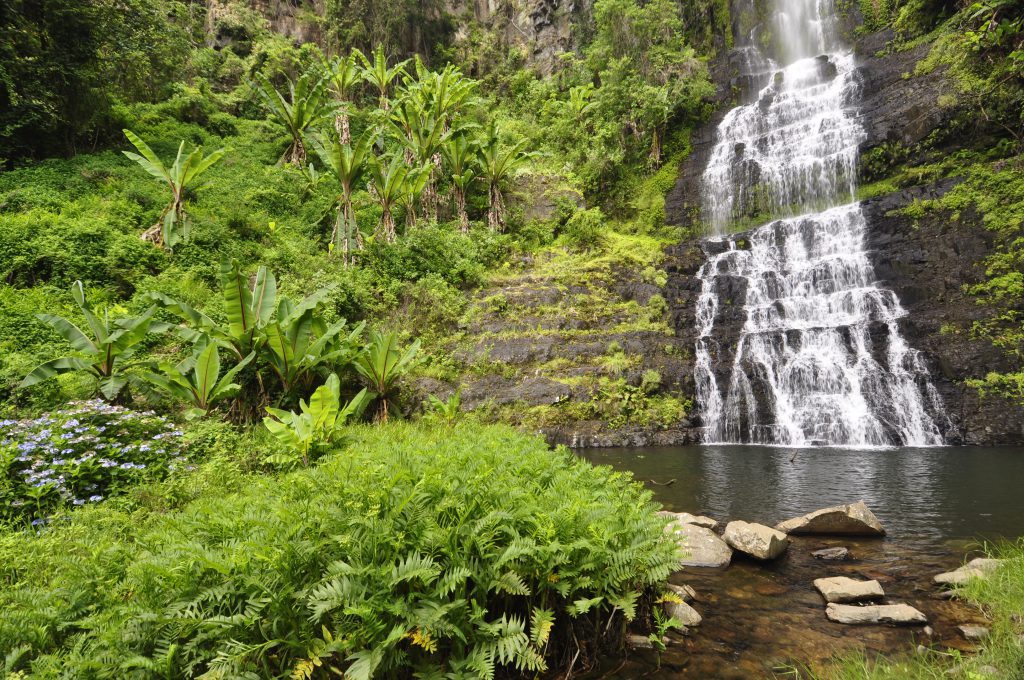
Bridal Veil falls
Bridal Veil falls is 4km from the Chimanimani Village. Bridal Veil Falls is located within the boundaries of Chimanimani National Park, the waterfall is famed for its natural beauty.
Tessa’s Pool
A popular place to visit within the national park is this natural swimming hole. Also here are San rock art paintings, but drop by the Outward Bound School (a children’s adventure camp that manages the area) first to gain permission.
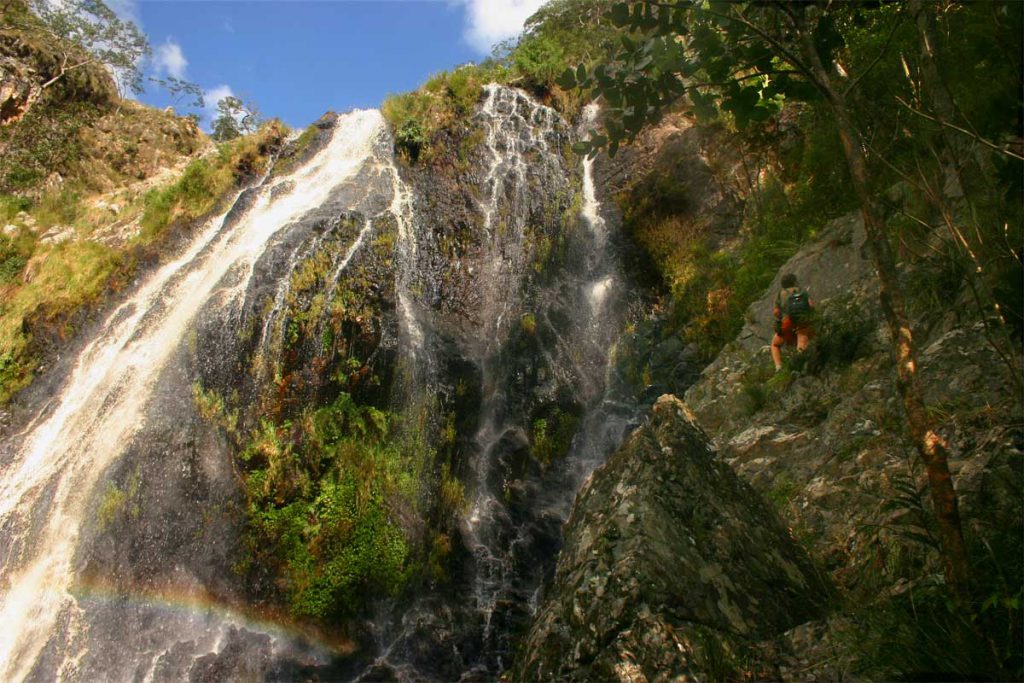
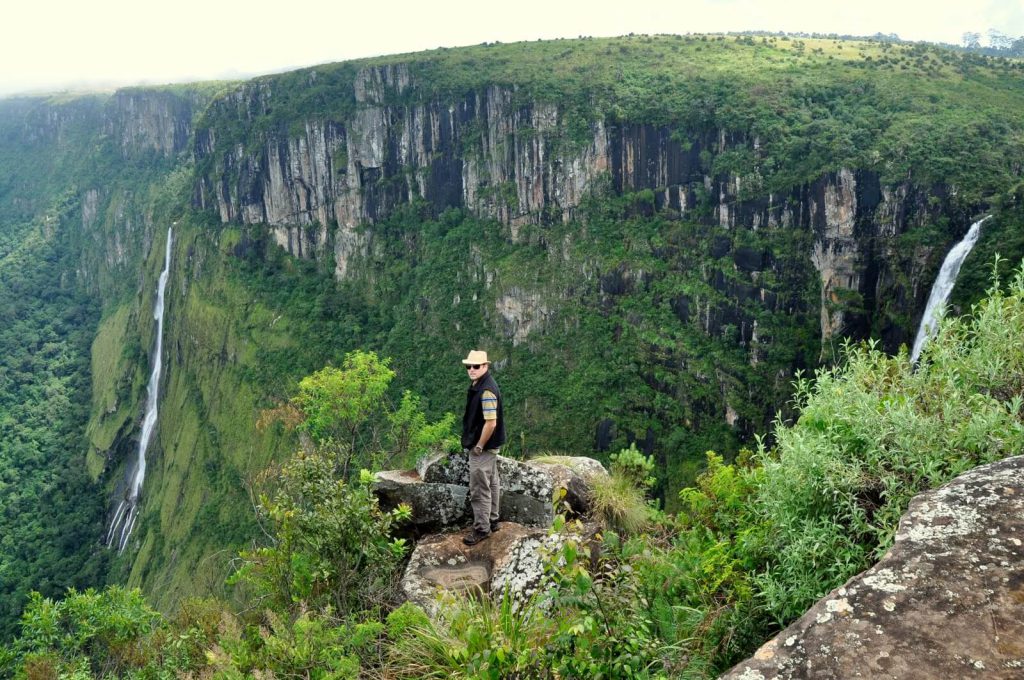
Mtarazi Falls
Mtarazi Falls is only 11.5Kkm from Pungwe Falls, it is located in the 2,495 hectare Mutarazi National Park adjacent to the southern border of the Nyanga National Park
Nyangombe Falls
Meet this series of cascading waterfalls on the western tip of the Nyanga National Park, another one of the numerous waterfalls within the terrains of Nyanga. If you can, one of the must-do acts that you will not regret as you reminisce over your experience here is to get a drone-shot while you sit or stand on the summit of the Falls. Close to the falls, the Nyangombe river cascades down the rocks into a natural swimming pool and a sandy area called Brighton Beach.
From the From Rhodes Nyanga Hotel drive 8.4 KM. A short walk of 300 metres takes you to the Nyangombe Falls.
